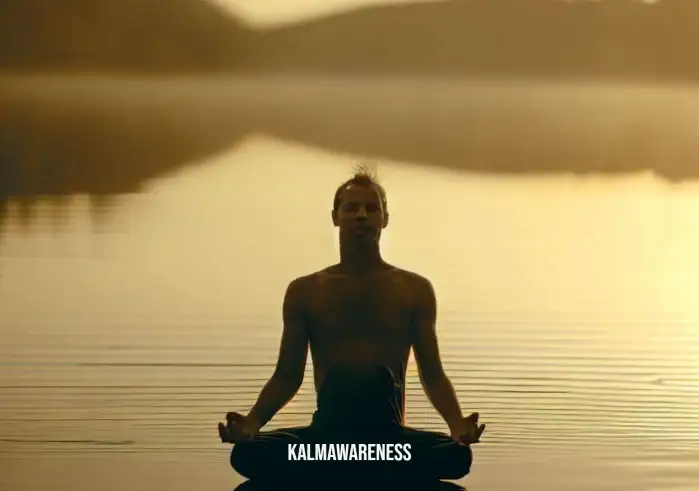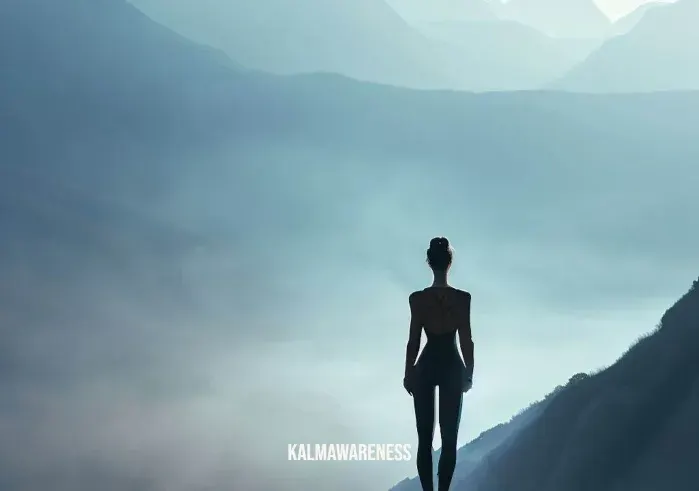World’s Hardest Yoga Pose: Challenging the Limits of the Body and Mind
Yoga, an ancient practice that unites the body, mind, and soul, offers a multitude of poses that cater to practitioners of all levels. From gentle stretches to complex postures, yoga poses are known for their ability to enhance flexibility, strength, and inner peace. Among the vast array of poses, one stands out as the pinnacle of challenge and achievement—the “World’s Hardest Yoga Pose.”
Pose Details
| Description | Explanation |
|---|---|
| Pose Name | World’s Hardest Yoga Pose |
| Original Name | Parama Shirshasana |
| Difficulty Level | Expert |
| Pose Category | Advanced Asanas |
| Exercise Duration | 60 seconds (Beginners) |
| 120 seconds (Advanced) |
The World’s Hardest Yoga Pose Unveiled
The “World’s Hardest Yoga Pose,” also known as Parama Shirshasana, is a posture that exemplifies the true essence of yoga. It demands unwavering focus, strength, and perseverance. This pose, often regarded as the crowning jewel of advanced asanas, holds the potential to elevate your practice to new heights.
Challenging the Limits of the Body and Mind
Incorporating elements of balance, flexibility, and control, World’s Hardest Yoga Pose is an awe-inspiring sight to behold. As the body defies gravity, you’ll experience an unprecedented connection with your inner self, transcending physical boundaries and mental limitations.
The Art of Attempting Parama Shirshasana
Reaching the pinnacle of yoga prowess with Parama Shirshasana requires meticulous preparation and dedication. While it may seem daunting, the journey towards mastering this pose is as transformative as the pose itself.
Step-by-Step Guide:
- Preparation: Warm up your body with a series of sun salutations and inversions. Engage in shoulder-opening poses like Gomukhasana and Garudasana to enhance flexibility.
- Find Your Foundation: Begin on your hands and knees in a tabletop position. Gradually shift your weight onto your forearms and lift your knees off the ground, forming an inverted “V” shape.
- Headstand Practice: Ensure you have a solid headstand practice before attempting this pose. Maintain your balance and stability in a standard headstand position.
- Transition Smoothly: From the headstand, slowly bring your legs down, folding at the hips. Aim to straighten your legs vertically towards the ceiling.
- Engage Core and Legs: Tighten your core muscles and engage your leg muscles to maintain the pose’s integrity.
- Balance with Grace: As you find balance, your entire body should form a straight line. The challenge lies in stabilizing yourself in this precarious balance.
- Hold with Calmness: Initially, hold the pose for 60 seconds. As you gain mastery, gradually extend the duration to 120 seconds or more.
- Release Mindfully: To exit the pose, reverse the steps with utmost control and gentleness. Return to the headstand position and eventually back to the tabletop.
Unlocking the Potential Within
Parama Shirshasana represents far more than a mere physical feat. It symbolizes the journey of a yogi, seeking to harmonize the body, mind, and spirit. As you delve deeper into this challenging pose, you’ll awaken a profound sense of self-awareness and unlock the potential within.

Elevating Your Practice: Exploring Advanced Asanas
In our journey of yoga, we encounter various postures that test our limits and allow us to transcend our physical and mental boundaries. While the “World’s Hardest Yoga Pose” remains the pinnacle of challenge, there are many other advanced asanas that offer their unique benefits and intricacies.
The Rewards of the World’s Hardest Yoga Pose
As you delve deeper into the world of Parama Shirshasana, you’ll discover an array of rewards that extend beyond the physical realm. The pose’s demanding nature requires heightened concentration, fostering a deep sense of mindfulness and focus. Furthermore, holding this pose enhances strength in the upper body and core, promoting better posture and body alignment.
Physical Benefits
- Strengthens Core Muscles: World’s Hardest Yoga Pose engages the abdominal muscles, obliques, and lower back, leading to a stronger and more stable core.
- Improves Shoulder Strength: As you balance on your forearms, your shoulder muscles work to support the weight of your body, enhancing shoulder strength and stability.
- Enhances Balance and Focus: The pose demands unwavering concentration, improving your ability to find balance both on and off the mat.
- Boosts Confidence: Successfully mastering this challenging asana instills a sense of accomplishment, boosting self-confidence in your yoga practice and daily life.
Who Cannot Attempt Parama Shirshasana?
While World’s Hardest Yoga Pose offers numerous benefits, it’s essential to recognize that this asana is not suitable for everyone. If you fall under any of the following categories, it’s best to avoid attempting this pose:
- Beginners: If you’re new to yoga or lack experience in inversions, it’s crucial to build a solid foundation of practice before attempting this challenging pose.
- Injuries or Medical Conditions: Individuals with neck, shoulder, or back injuries, as well as those with high blood pressure or glaucoma, should refrain from practicing this pose.
- Pregnancy: Pregnant practitioners should avoid inversions and poses that put excess pressure on the abdomen.
Variations for Different Experience Levels
Yoga is an inclusive practice, and there are variations of Parama Shirshasana that cater to practitioners of different experience levels. Whether you’re an advanced yogi seeking to deepen your practice or a beginner working towards this challenging pose, there’s a variation suitable for you:
- Wall-Supported Variation: Beginners can practice with the support of a wall. Start by setting up near a wall in the headstand position, with your feet resting against the wall for balance.
- Bent-Knee Variation: If straightening both legs proves challenging, beginners can begin with the bent-knee variation. Gradually work towards extending the legs over time.
- One-Leg Extended Variation: For intermediate practitioners, attempting to extend one leg at a time can help build strength and stability.
- Lotus Legs Variation: Advanced yogis can incorporate the lotus leg position into the pose, adding an additional layer of challenge and flexibility.
The Path of Evolution
As you embark on the path of exploring advanced asanas, remember that each pose is a stepping stone in your yoga journey. The quest for World’s Hardest Yoga Pose is not a destination but a process of continuous growth and self-discovery.

Harnessing the Prana: The Art of Pranayama
As our journey of yoga continues, we delve into the profound practice of pranayama—the art of breath control. Just as the “World’s Hardest Yoga Pose” challenges the body, pranayama presents a unique path towards self-awareness, spiritual growth, and vitality.
The History of Pranayama
Pranayama, an integral aspect of yoga, finds its roots in ancient Indian scriptures and texts. The practice of breath control is believed to have been mentioned in the Vedas, the earliest sacred texts of Hinduism. Over the centuries, yogis and sages refined and developed various pranayama techniques to optimize the flow of vital life force energy (prana) within the body.
The Spiritual Significance of Pranayama
Pranayama extends beyond the physical realm and delves into the spiritual aspects of yoga. The breath serves as a bridge between the physical body and the mind. By harnessing the breath, practitioners can calm the mind, increase focus, and unlock the higher realms of consciousness.
In the context of the “World’s Hardest Yoga Pose,” integrating pranayama into your practice can aid in achieving balance and stability. By syncing the breath with movement, you create a harmonious flow of energy that supports your endeavors to master this challenging asana.
Tips for Getting the Most Out of Parama Shirshasana
Achieving the full potential of World’s Hardest Yoga Pose requires more than just physical strength. Here are some essential tips to help you get the most out of your practice:
- Mindful Preparation: Warm up thoroughly before attempting the pose. Engage in shoulder-opening exercises and ensure your body is adequately prepared.
- Find Your Focus: During the pose, maintain unwavering focus on your breath and body alignment. This concentration will aid in finding balance and stability.
- Listen to Your Body: Respect your body’s limitations and avoid forcing yourself into the pose. Progress gradually and mindfully.
- Build Core Strength: Strengthening your core muscles is crucial for maintaining balance during the pose. Incorporate core-focused exercises into your regular practice.
Common Mistakes to Avoid
As with any challenging pose, there are common pitfalls that practitioners may encounter. Being aware of these mistakes can help you refine your practice:
- Rushing into the Pose: Attempting Parama Shirshasana without proper preparation can lead to injury. Take your time and build a solid foundation.
- Holding Breath: Forget not the breath! Maintain a steady and controlled breath pattern throughout the pose.
- Sacrificing Alignment: Avoid compromising body alignment to achieve the pose. Proper alignment is crucial for safety and effectiveness.
Modifications for People with Injuries or Limited Flexibility
Practicing yoga with injuries or limited flexibility requires special care and attention. While World’s Hardest Yoga Pose may seem unattainable in such cases, there are modifications to accommodate different needs:
- Wall Support: Beginners and those with limited strength can practice the pose with the support of a wall, ensuring stability and safety.
- Blocks or Bolsters: Using props like blocks or bolsters can assist in achieving proper alignment and making the pose more accessible.
Poses Complementary to Parama Shirshasana
To enhance your practice of World’s Hardest Yoga Pose, consider incorporating these complementary asanas into your routine:
- Shoulder Stand (Sarvangasana): This inverted pose strengthens the shoulders, neck, and upper back, preparing the body for Parama Shirshasana.
- Plank Pose (Phalakasana): Building core strength through plank pose will contribute to the stability required in the “World’s Hardest Yoga Pose.”
- Seated Forward Bend (Paschimottanasana): This stretch improves hamstring flexibility, essential for straightening the legs in the advanced pose.
The Integration of Body, Breath, and Spirit
As we conclude our exploration of pranayama and its connection to the “World’s Hardest Yoga Pose,” we recognize that yoga is a holistic journey that integrates the body, breath, and spirit. The combination of challenging asanas and breath control techniques empowers practitioners to deepen their practice and experience the true essence of yoga.
Invitation to the Final Part
In the final chapter of our yoga odyssey, we’ll immerse ourselves in the world of meditation. Join us as we explore the transformative power of mindfulness and delve into the art of meditation.


